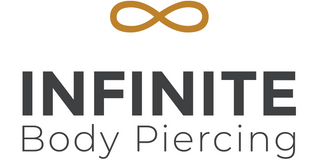Stretching FAQ
How long should I wait between stretches?
The length of time you should wait between stretches is dependent upon the area you are stretching and the current piercing size. Some areas are more supple and forgiving to stretching (lobes, septums, and inner labia); however, many areas are made of more rigid tissue which will not yield as easily (ear cartilage, navels and nipples, to name a few). This means that there is no such thing as a definitive stretching timeline; instead, you should listen to your body.
That being said, as a general rule, easily-stretched piercings (earlobes, inner labia) should be given at least two months between sizes. More difficult areas (ear cartilage, ampallangs, and apadravyas) often need six months between jumps.
I already know I want to go big; how large can I start?
If you plan on a large piercing from the beginning, make sure you let your piercer know. Most piercings can be started larger than is traditionally offered to clients, and you will definitely want to discuss things with your piercer beforehand, as this will affect jewelry choices, and often the piercing's placement.
In the case of earlobes, if they’re large enough, the piercing can easily be done at a 6 or 4 gauge to start. If you’re unsure how big you’d like to start with, come on in and we can discuss your options.
I heard there are other options for going big, like using dermal punches or scalpels?
There are other ways to pierce an ear besides using a piercing needle, but not all of them are using instruments that piercers in the U.S. may be allowed to use. (More information is here.) Again, come in and we can talk to you about your options.
How big can I stretch my piercing before it won’t go back to “normal” size?
This is the one question that everyone seems to want to know before starting—and the one that has no real answer. Stretching is a long journey, and one that changes you permanently. If you don’t want enlarged piercings for the rest of your life, don’t stretch them.
When talking about earlobe stretching, in many circles (and online forums) 2 gauge is often considered the “point of no return.” However, there is no such magic number; the idea that there is a one-size-fits-all return is a myth. Many factors affect how your piercing will shrink after larger jewelry is removed. One factor is obviously size, but others, like the time between stretches, method of stretching, and how long the piercing has been at a larger size all play a part.
What can I do if I’ve stretched my ears and want to go back to “normal” earlobes?
We don’t offer this service at Infinite, but it is often possible to return earlobes to a normal appearance through a bit of trimming and suturing. Check with your doctor for a referral to a plastic surgeon, or if you would prefer to look for someone from inside the body modification industry, you can contact Steve Haworth.
Why does my piercing stink?
The smell or “ear gunk” most people complain about when they stretch a piercing is caused by dead skin. Whether you realize it or not, your body sheds skin cells every day; you just don’t see (or smell) it under normal circumstances, as these cells tend to flake to the floor or rinse off when you shower. However, as the surface area of your piercing and jewelry increases, as it does when you stretch, there’s a significant amount of skin touching your plugs, and a significant number of dead skin cells that don’t have anywhere to go but build up on your jewelry. This effect, and the smell that goes along with it, varies from person to person and from material to material, but is one of the reasons you should clean your piercing and jewelry regularly—even if the piercing is fully healed.
What piercings can be stretched?
Nearly any piercing in the body can be stretched to accommodate larger jewelry. However, some piercings are easier to stretch than others. For more information about stretching methods, and how they vary depending upon the piercing's location, check our page on ways to stretch piercings.
That being said, special care should be taken when attempting to stretch surface piercings and others that are in a similar category. Stretching these can result in a higher risk of rejection and migration and are usually better left alone. These piercings include eyebrow and nape and other generally “flat” piercings.
How badly does it hurt?
It shouldn’t. While you may experience some warmth, stinging, or mild discomfort when inserting larger jewelry for the first time, pain is a sign that you are going too far, too fast. It’s your body’s way of telling you something is wrong, so listen to it.
I just stretched, but my piercing is very sore, swollen, and/or bleeding. What should I do?
If you’ve gone too far too quickly, you may need to downsize. (Don’t worry; we’ve all been there.) We know it’s hard to hear, especially after struggling to get the jewelry in there, but going too far, too fast can result in scarring that makes stretching more difficult in the future. After downsizing, give your piercing a break and some TLC with salt-water soaks before trying again.
For more information on rips, tears, blowouts, and other reactions, check out our troubleshooting page.
















